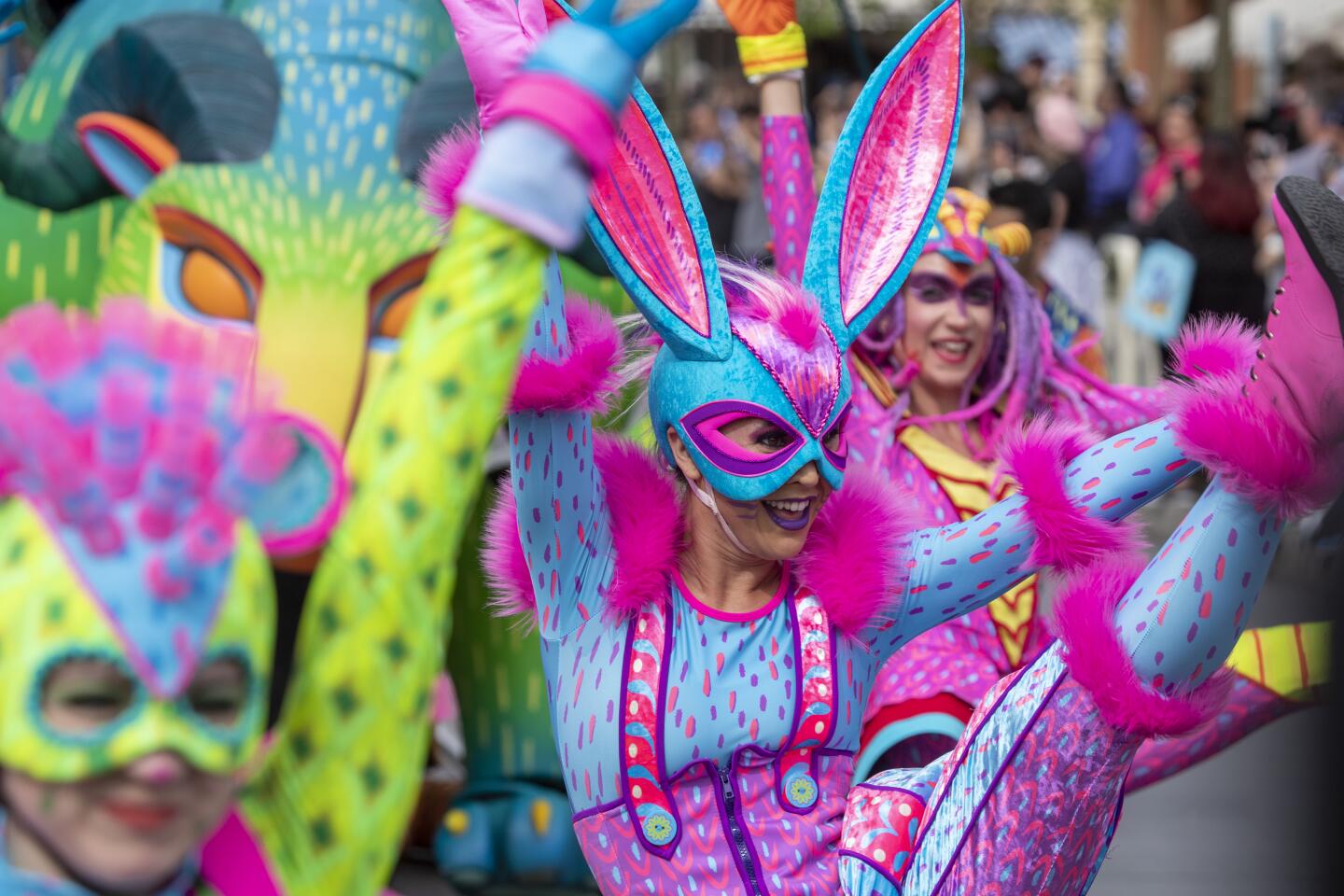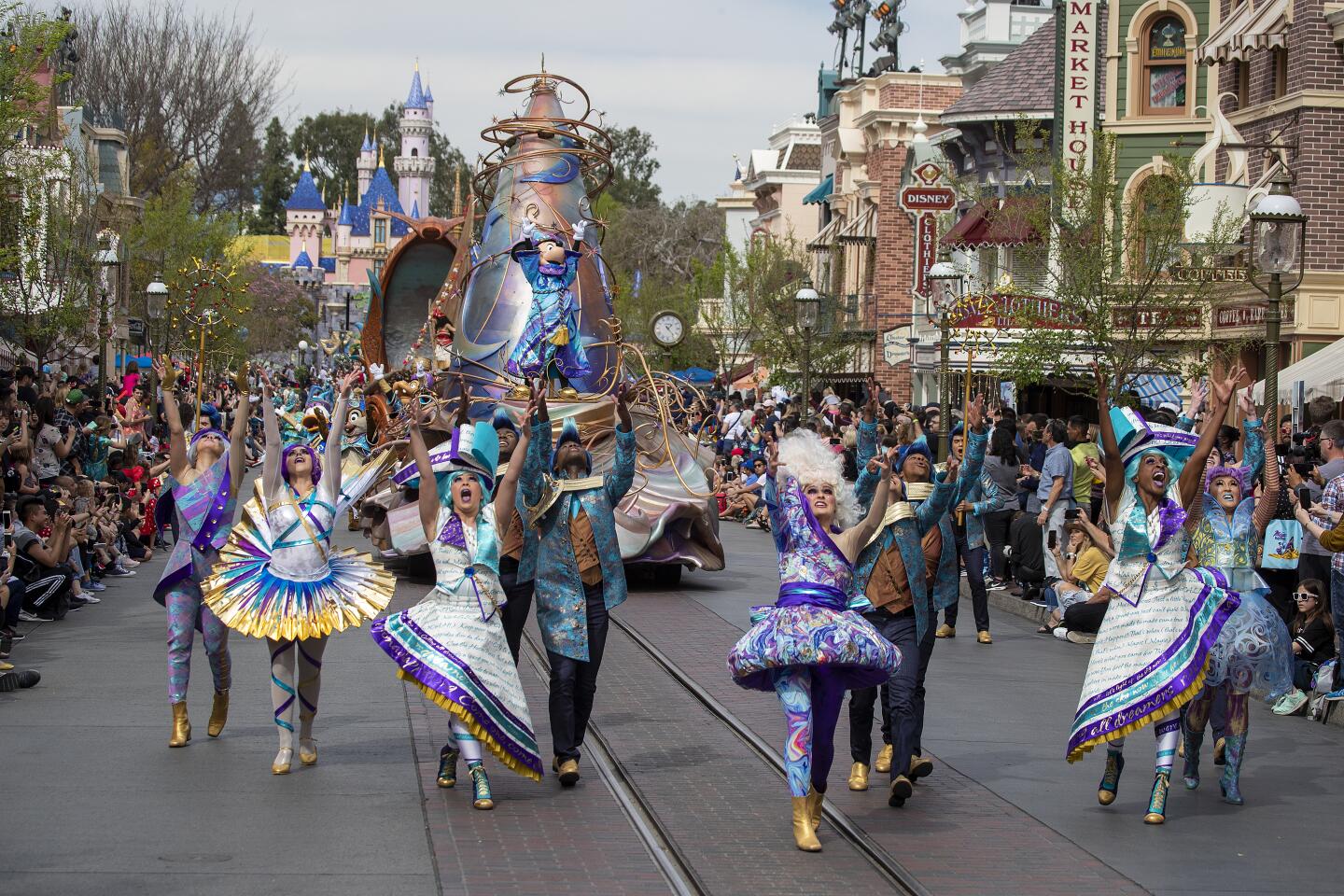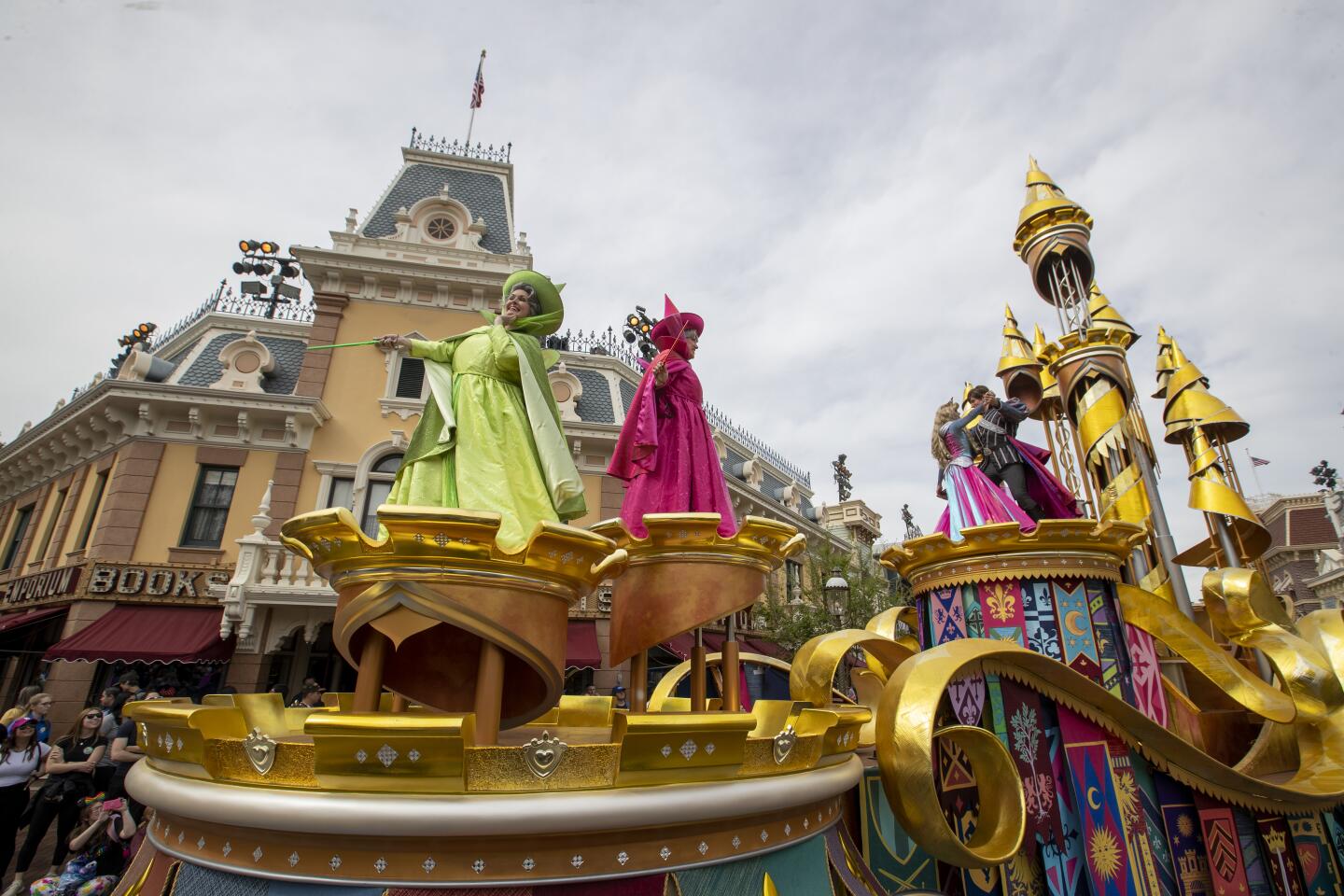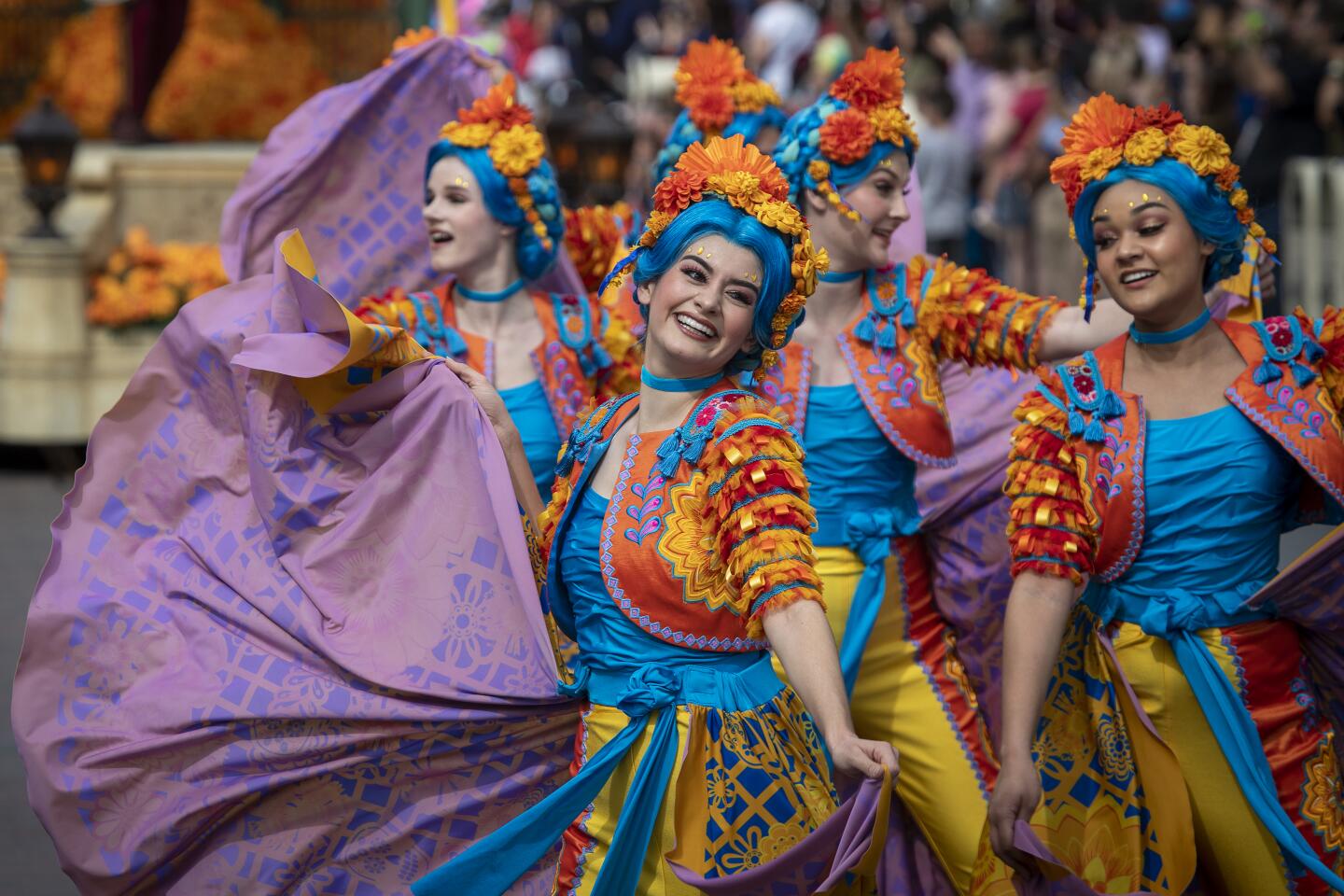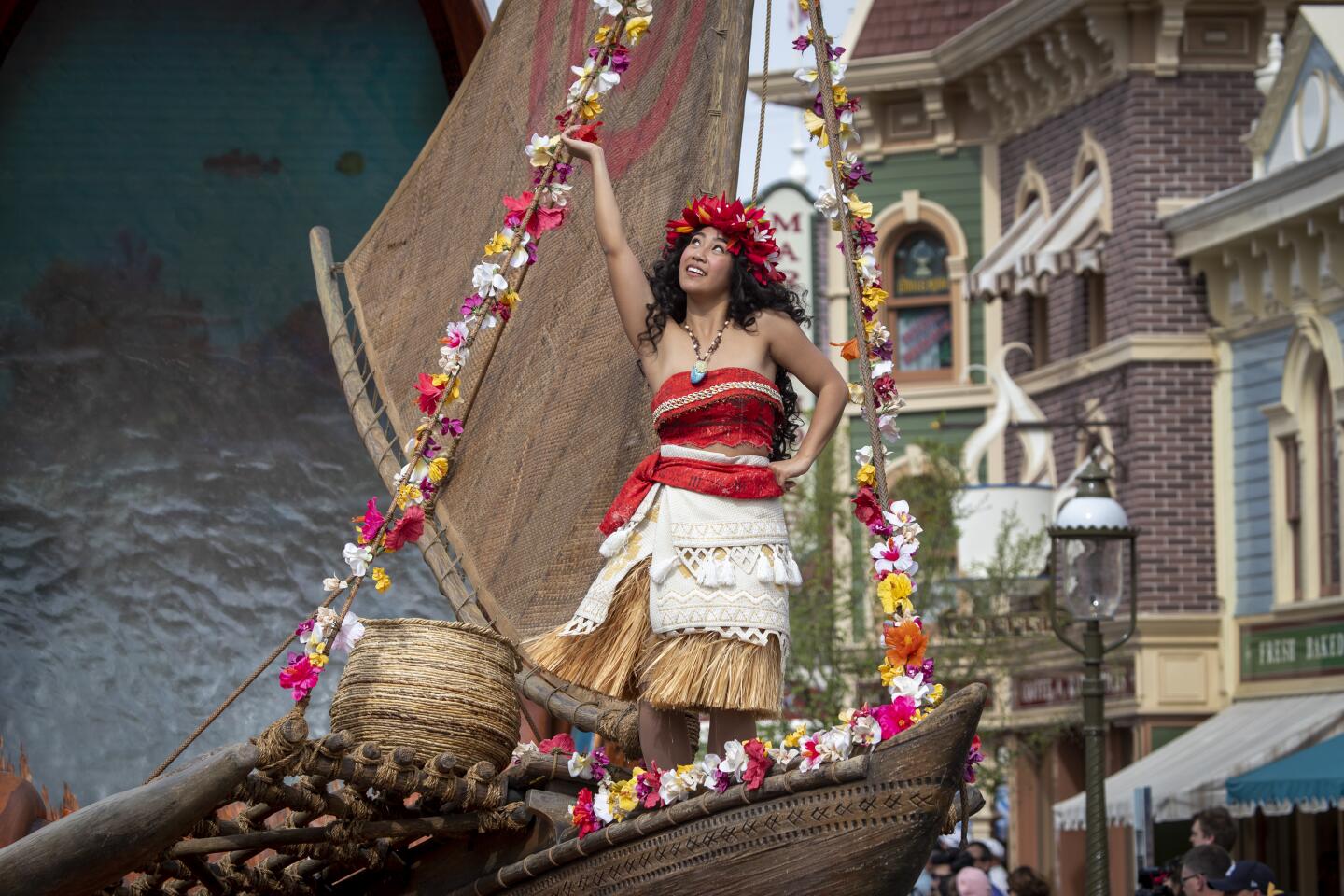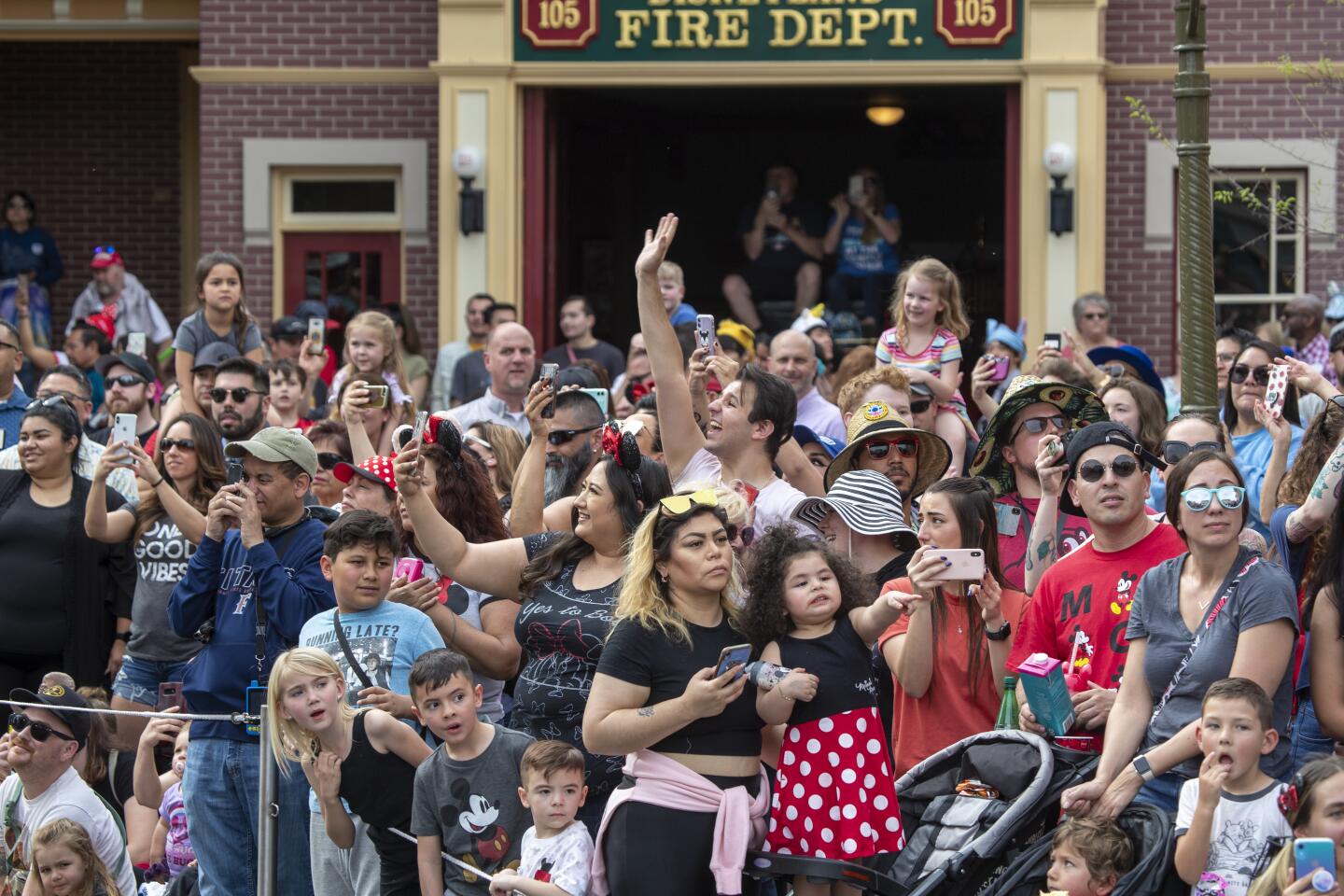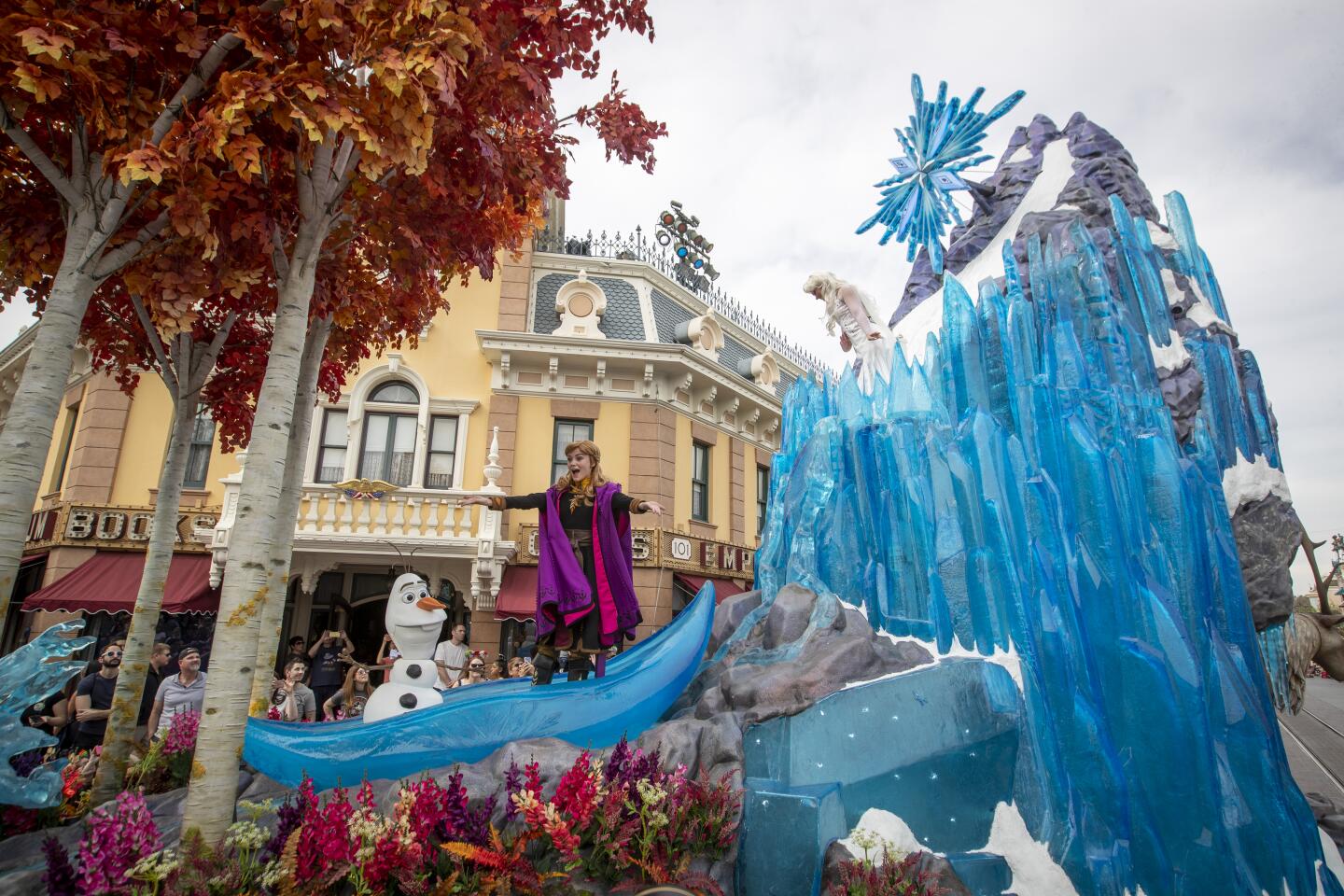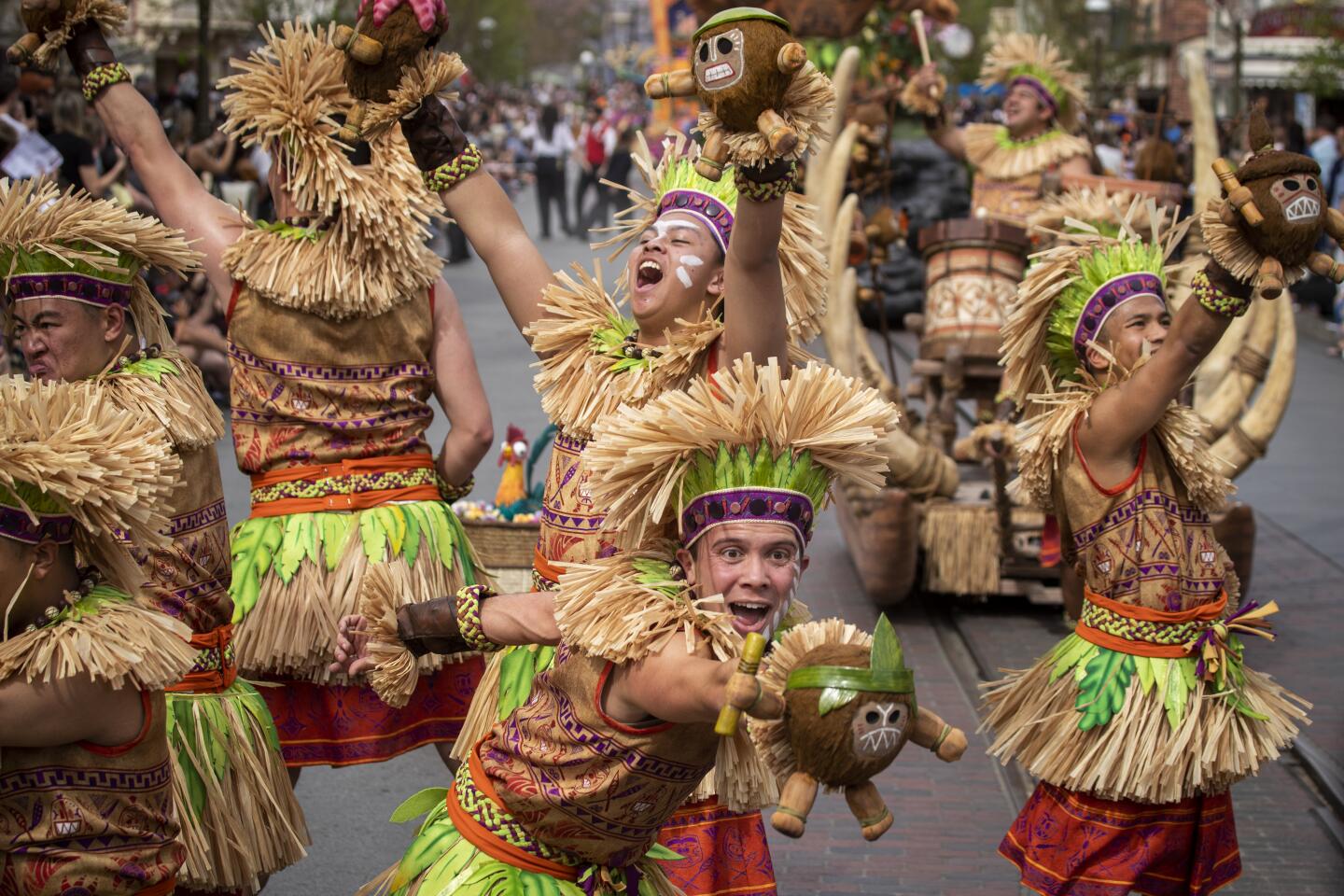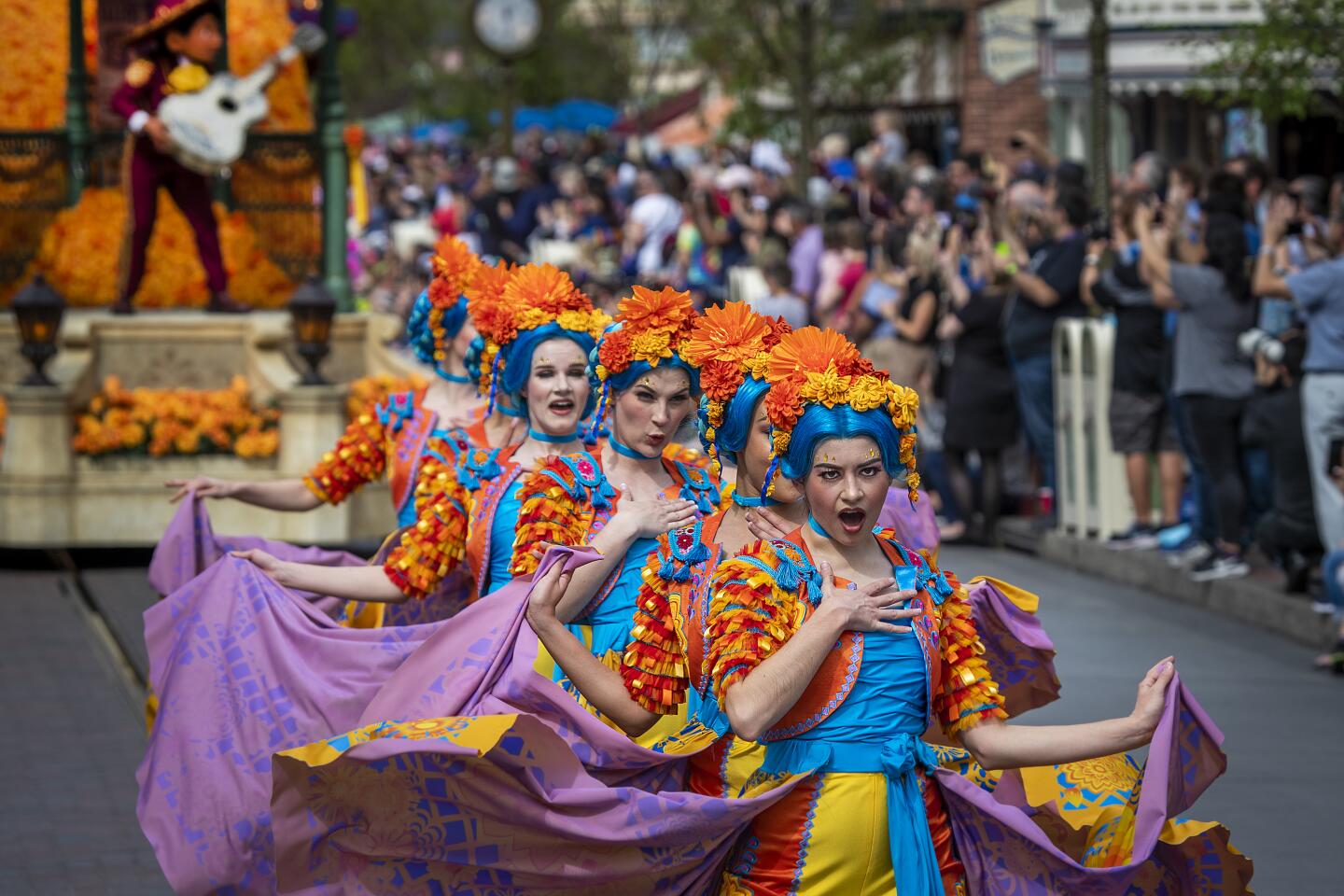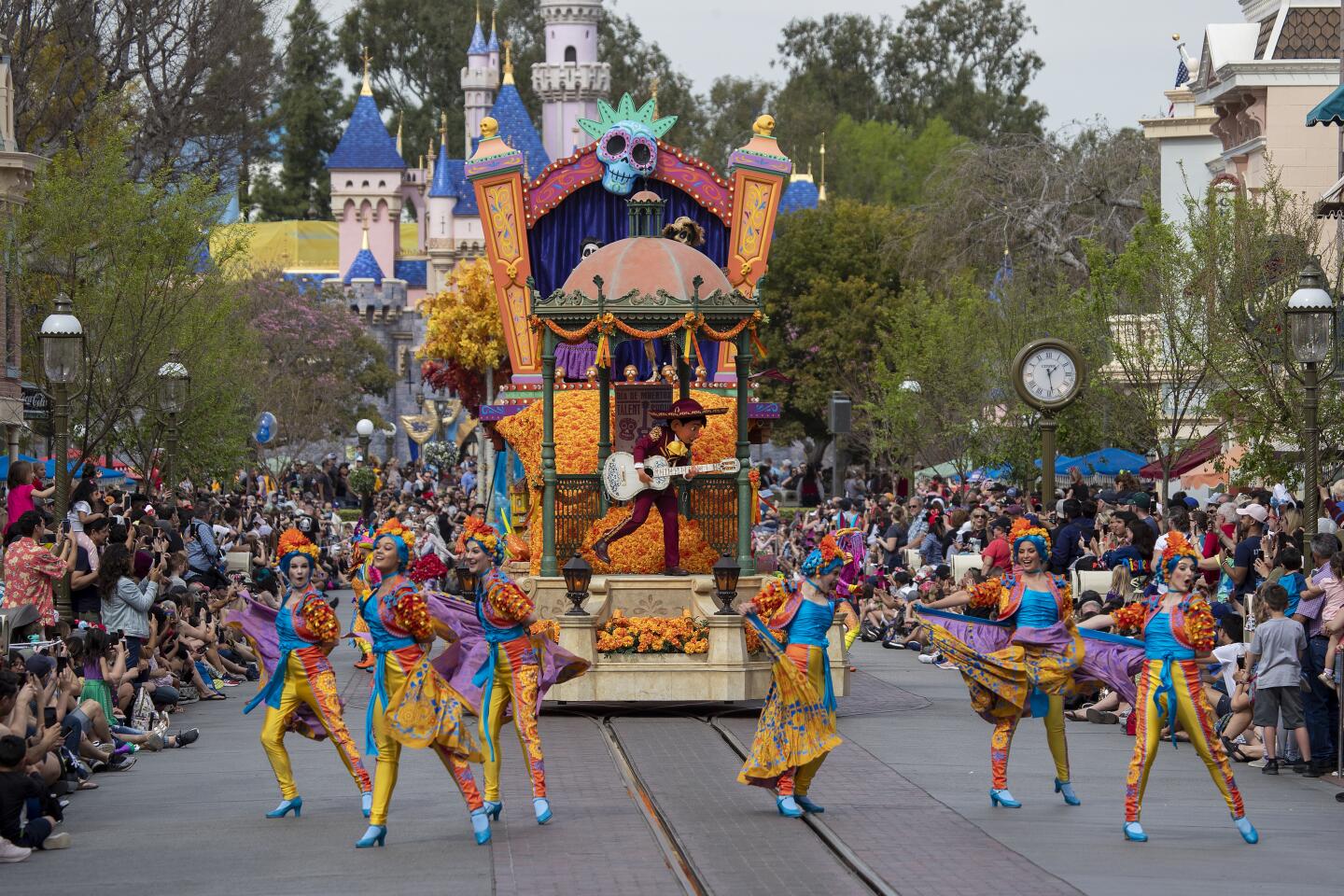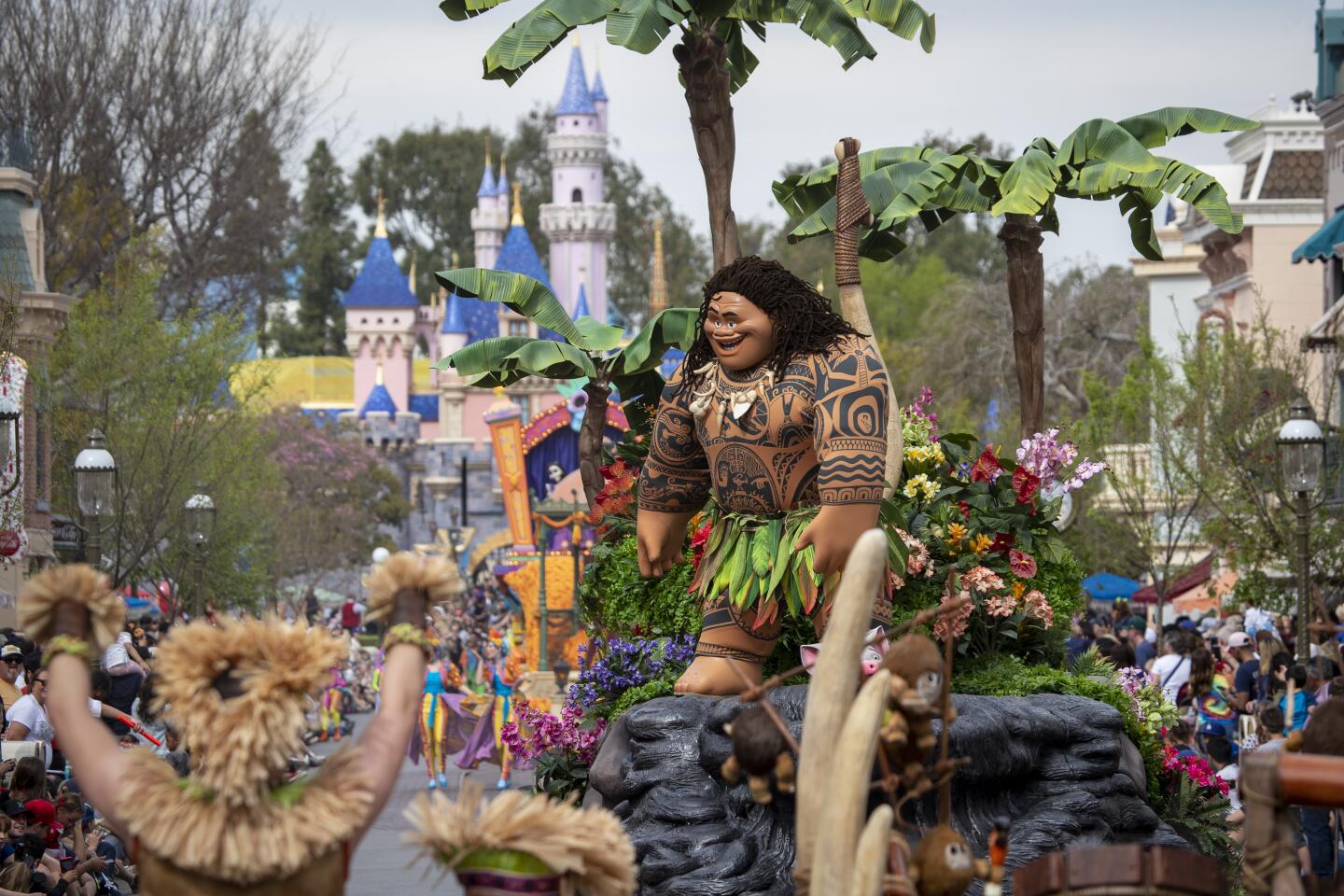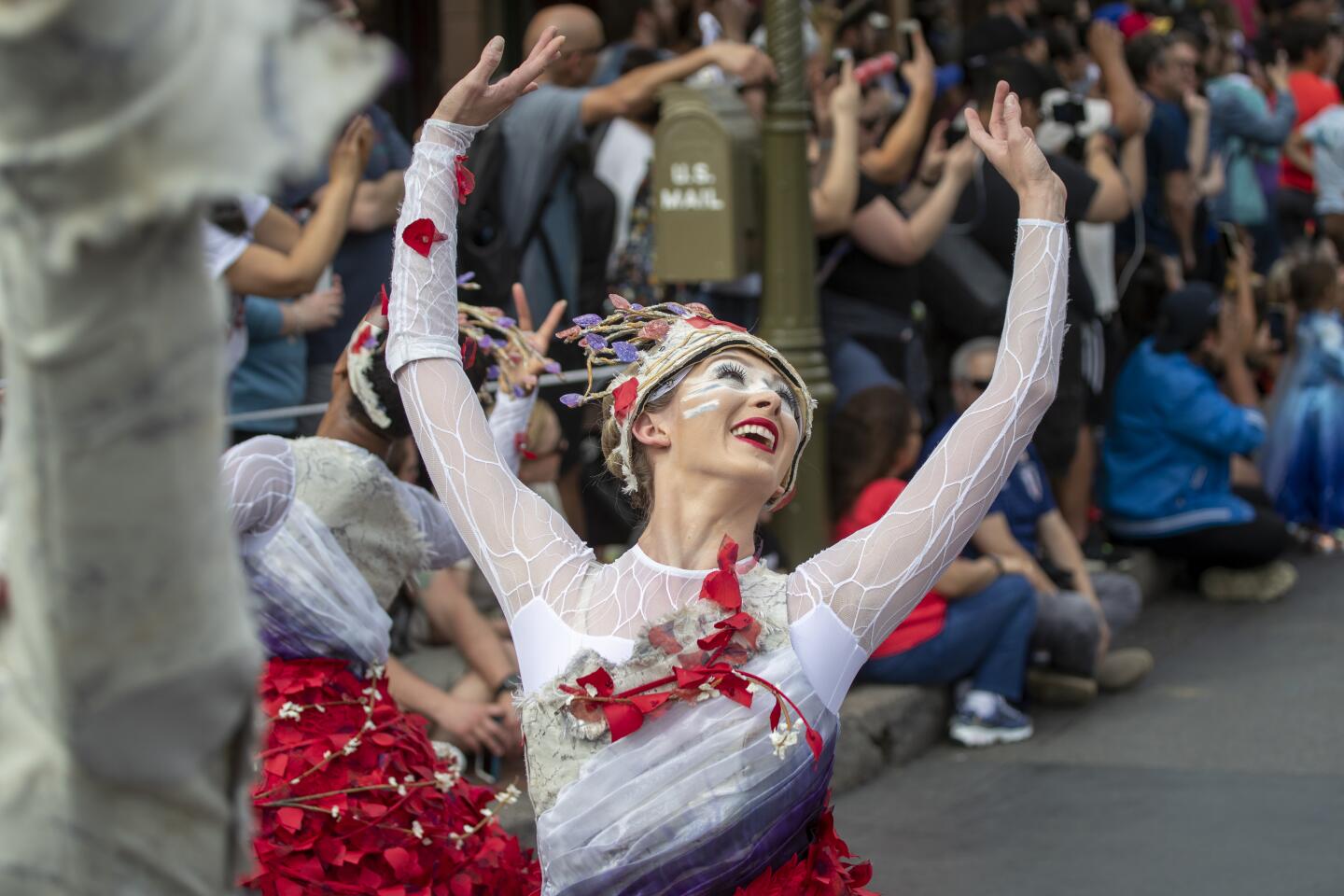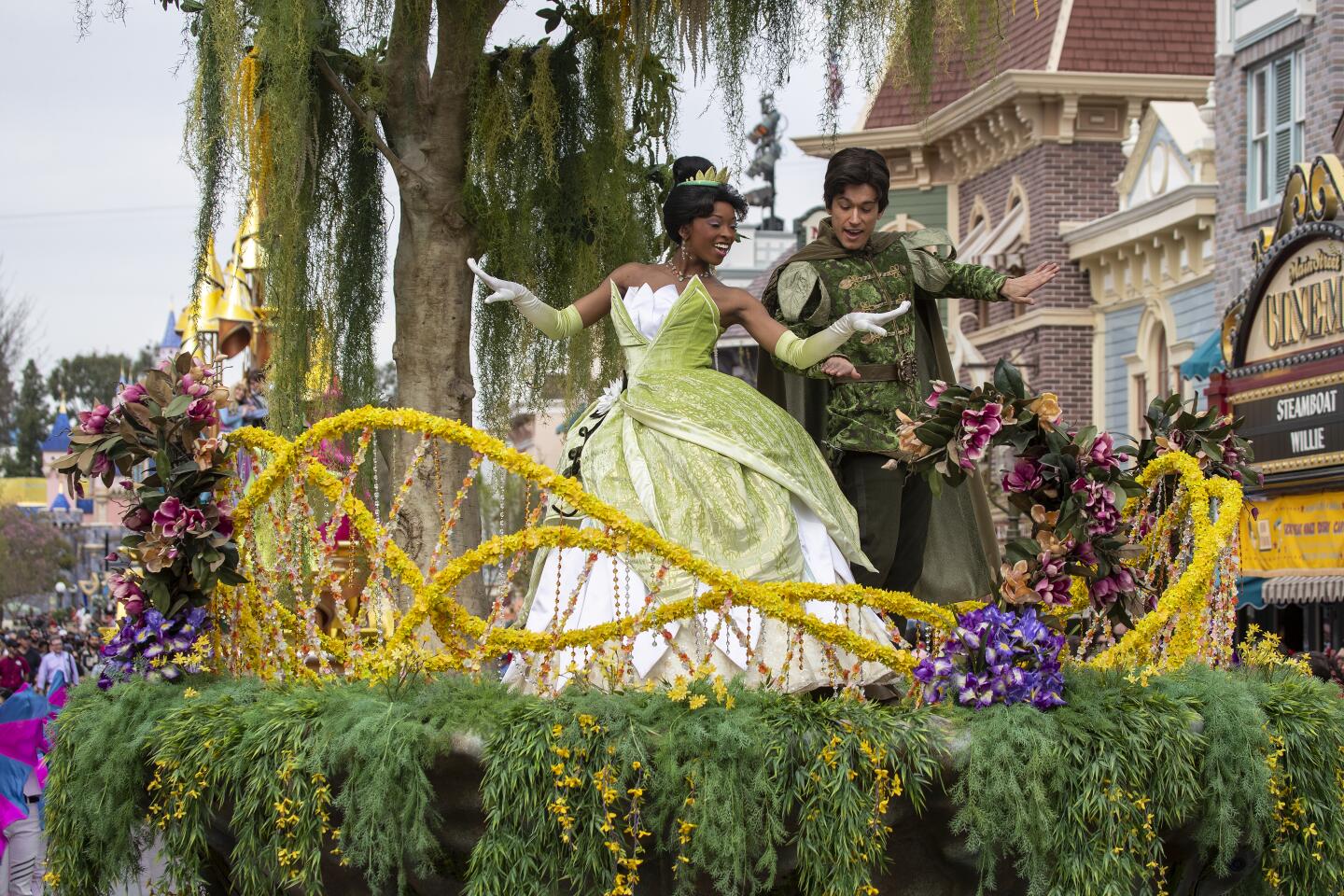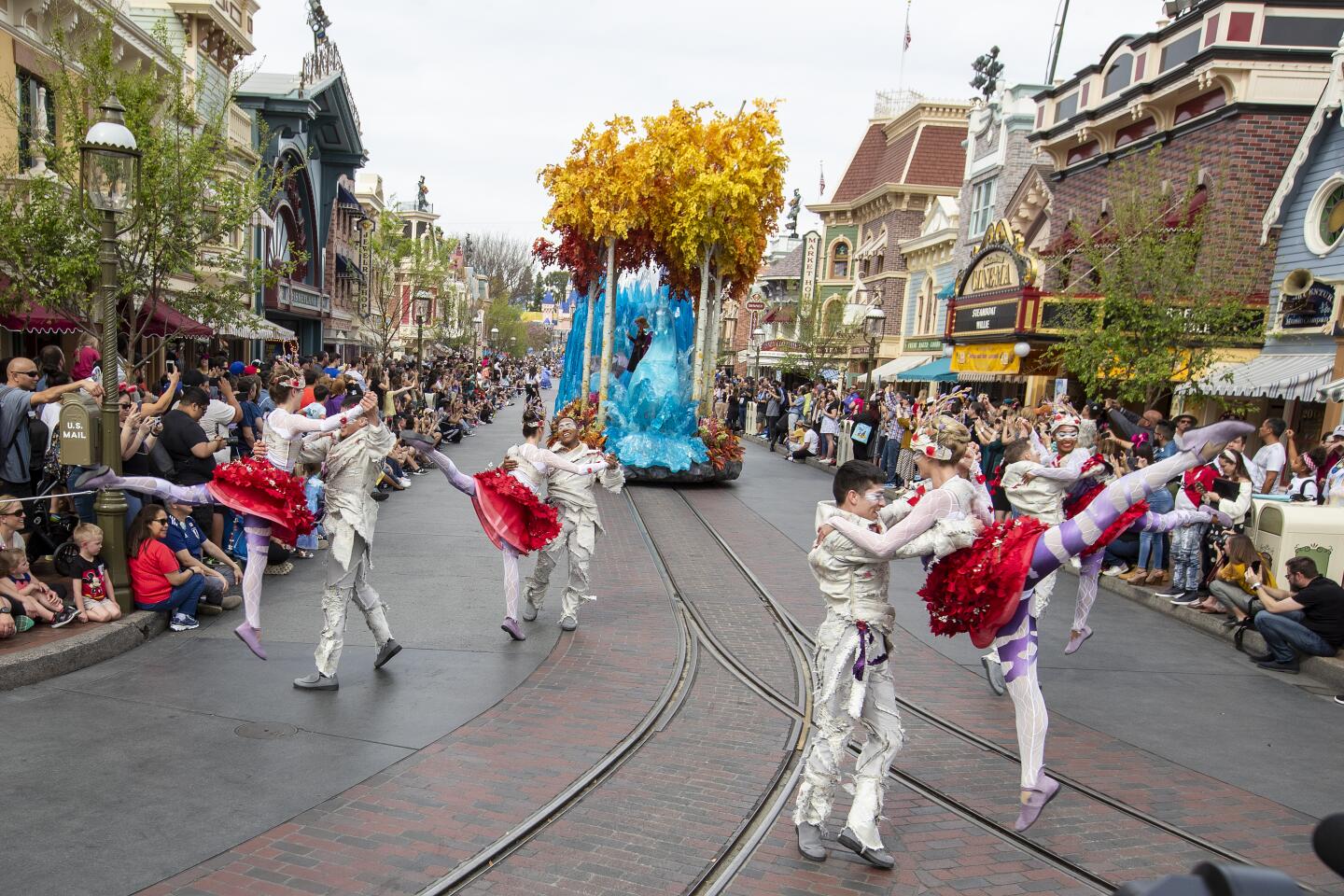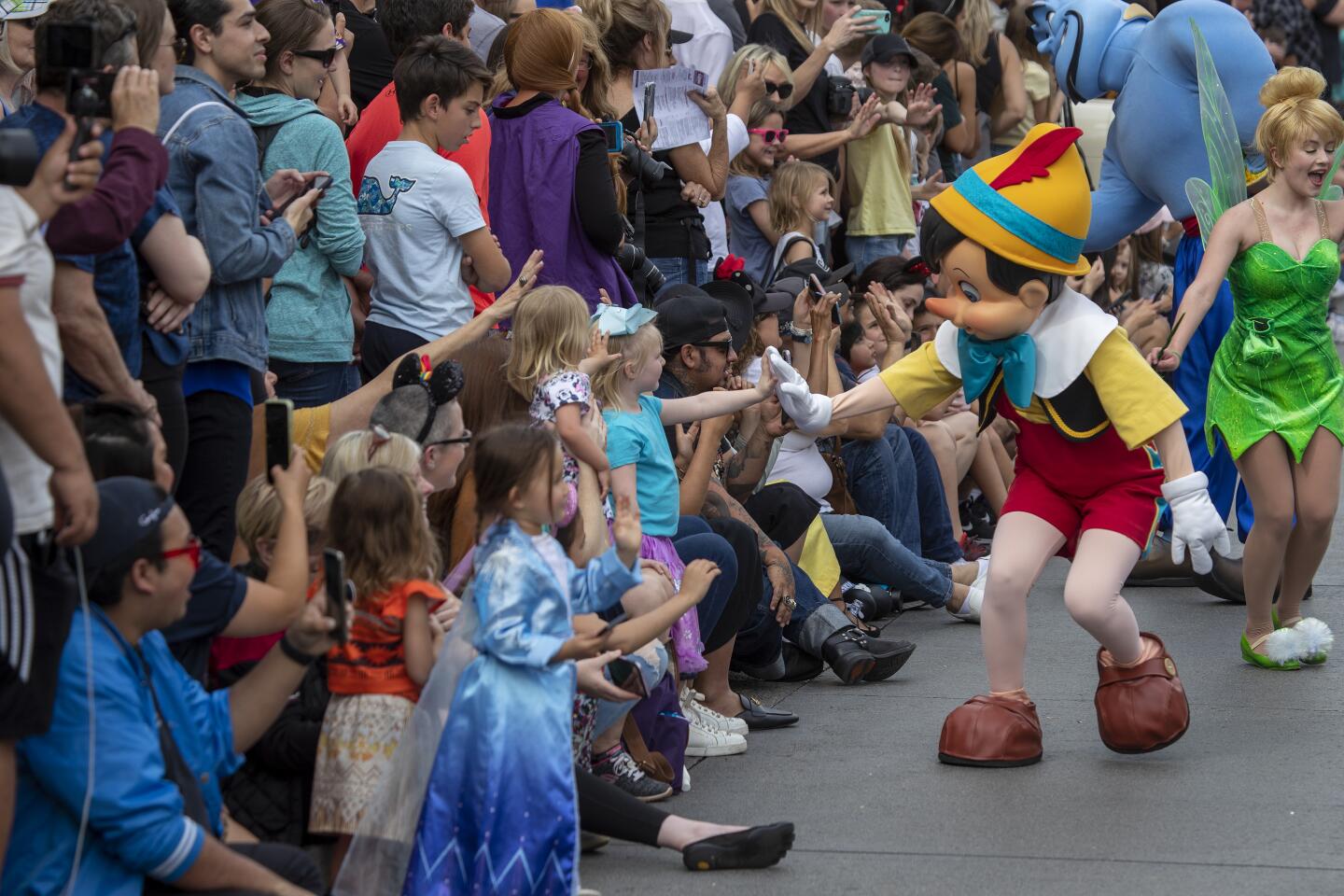Disneyland’s new Magic Happens parade debuts today after two years of planning and rehearsals
- Share via
For the last few weeks, carefully coordinated late-night operations have taken place on the streets of Disneyland after the last visitor steps out of the gates.
Performers wearing fluorescent orange safety vests practice dance moves as they follow brightly colored floats depicting popular Disney movie scenes and characters. They’re working to perfect Magic Happens, Disneyland’s first new daytime parade in more than nine years.
Once the dancers and floats complete the practice run, another parade takes over Main Street USA. This time it is a procession of maintenance crews wielding paint brushes, weed-whackers and hoses and a small fleet of trucks delivering food, drinks and merchandise to the nearby eateries and shops.

The two groups have been taking turns occupying the street nightly, long into the brisk early morning hours.
“It is pretty cold but we warm up really fast,” said Kristina Gutierrez, one of the parade dancers.
Before Disneyland visitors get to see the performers’ ever-present smiles, synchronized dance moves and high-tech floats, there are months of late-night rehearsals, brainstorming sessions, costume designing and float building to make the spectacle ready for public consumption.
For the Magic Happens parade, work began more than two years ago, in a process that involved hundreds of dancers, welders, painters, engineers and vendors from as far away as Hong Kong. The new parade debuts Friday, the latest of more than 40 parades launched at the Anaheim resort over its 65-year history.
Parades are a regular feature at Disney theme parks, becoming almost as much of a draw as the rides and attractions. Magic Happens will run twice a day, seven days a week.
“Parades are a great way for a family to sit down and relax while we bring all of the entertainment to them,” said David Duffy, creative director of Disney Live Entertainment.
Parades also help encourage visitors to stay in the park longer, ensuring that they spend more on food and drinks, according to theme park industry experts.
“If you get them to stay past dinnertime, then it increases the chances that they buy food,” said John Gerner, managing director at Leisure Business Advisors. “Food and beverage spending is a major part of theme park spending nowadays.”
Parades also help the park sell souvenirs created specifically for the occasion, including T-shirts, Mickey ears, drink cups and Christmas tree ornaments.
Walt Disney himself was a big fan of parades, writing fondly in 1938 about seeing his first circus parade as a child growing up in Marceline, Mo. Disney first commissioned a helium-filled Mickey balloon for the Macy’s Thanksgiving Day Parade in New York in 1934 and entered a float for the Rose Parade in Pasadena in 1938. Both were promotional vehicles to advertise his animated films.
The first parade inside Disneyland was the opening day parade in 1955.
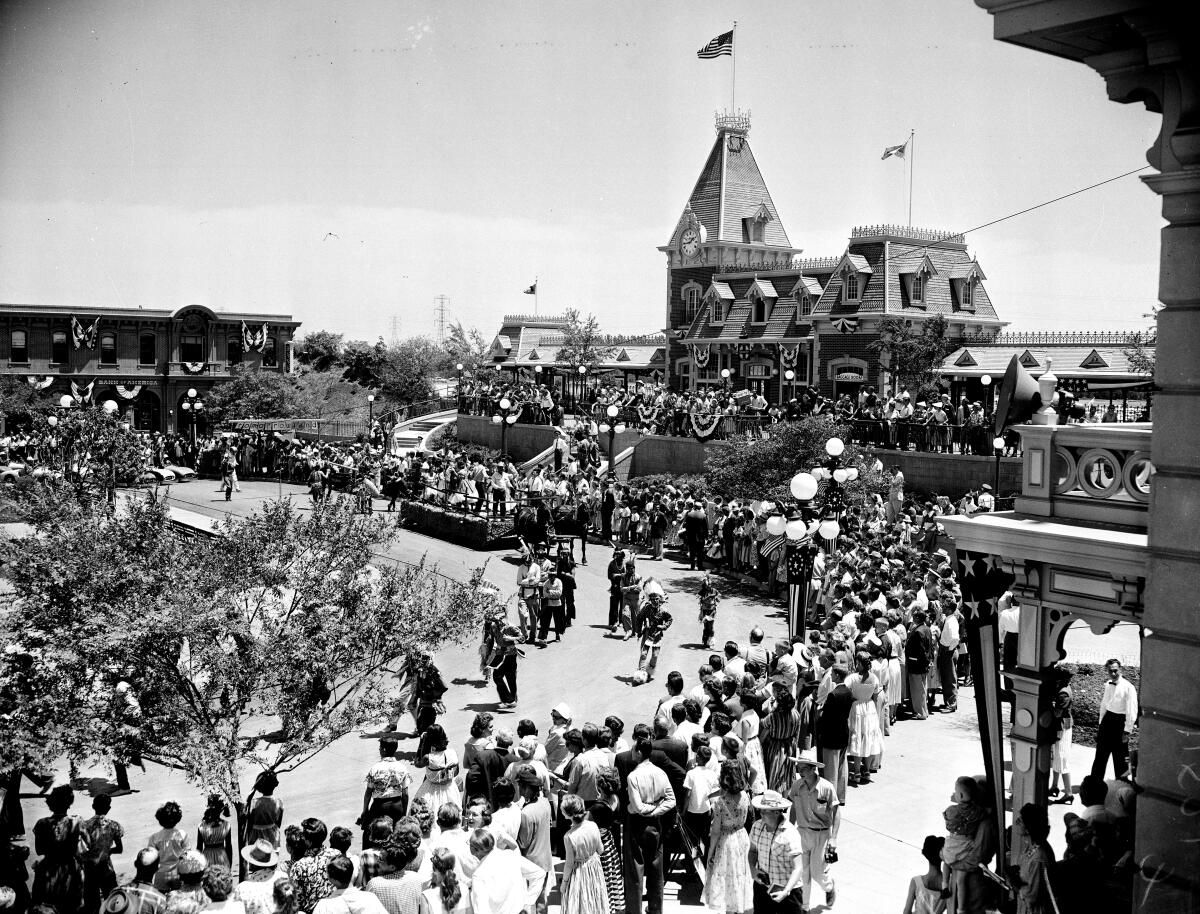
But putting on a Disney parade has never been easy. While launching its first night parade in 1972, Disney workers struggled with a canopy of lights that collapsed and lighted costumes that emitted sparks, plus a float that smashed into a building along Main Street USA.
The resort’s most recent parades, the Main Street Electrical Parade and Paint the Night, are on indefinite hiatus.
Work began on the latest creation with brainstorming sessions about the theme. That decision, like many others to come, had to be approved by Walt Disney Co. top executives, including newly minted CEO Bob Chapek, who has overseen Disney’s parks for the last five years.
“The Walt Disney Co. is one where even the most senior levels of leadership like to be engaged in the process,” Duffy said. “Something like a parade is a very large investment for the resort and represents a very large commitment.”
After a theme was agreed upon, floats were sketched and music chosen. For the score and lyrics, Duffy said Disney wanted a contemporary sound and turned to Todrick Hall, a former Disney performer who gained fame as a YouTube star and contestant on season nine of ABC’s American Idol.
In an interview, Hall described himself as a Disney “super fan” who learned dance moves from watching videos of performers in the Disneyland Christmas Fantasy Parade.
Hall described how he spent nearly a year writing and recording songs to accompany each of the parade’s nine floats because he was determined to get the music right. Two were original works and the rest were updates of existing Disney songs.
“Disney pays attention to every line and every detail, which I really appreciate,” he said. “It really challenged me to make every single line count.”
After the music was commissioned, construction crews built the floats over the next several months while designers created the costumes. Parade planning was complicated by the fact that “Frozen 2,” the sequel to the 2013 animated Disney film, was still in production and float designers weren’t sure which film characters would be included on the Frozen 2 float.
When the parade rolls out on Main Street USA, it features about 100 dancers and other performers. But more than 300 people learn the parade roles to take over in the event of illnesses, vacations and other scheduling matters.
Early rehearsals took place in an empty building that previously operated as the sports eatery known as the ESPN Zone in the Downtown Disney shopping district.
“It was a lot of trial and error,” said Gutierrez, who performed on four previous parades before being hired for Magic Happens.
She said the performers learned dance steps for a “loop” of music that lasts about two minutes and is repeated up to 16 times during the entire time it takes the parade to travel from a spot near the It’s a Small World ride until it ends near the park entrance.
The performance can be physically demanding, which is why the dancers were offered a training regiment to improve their stamina and core strength, she said.
“You have to find those moments when you are engaging with the crowd and you need to breathe,” Gutierrez said.
But all the work has a huge payoff when the parade rolls down Main Street USA, lined by crowds of cheering fans, she said.
“Opening a parade, there is no other feeling like it,” Gutierrez said. “Sometimes the screams are so loud you can’t hear the music.”
More to Read
Inside the business of entertainment
The Wide Shot brings you news, analysis and insights on everything from streaming wars to production — and what it all means for the future.
You may occasionally receive promotional content from the Los Angeles Times.
